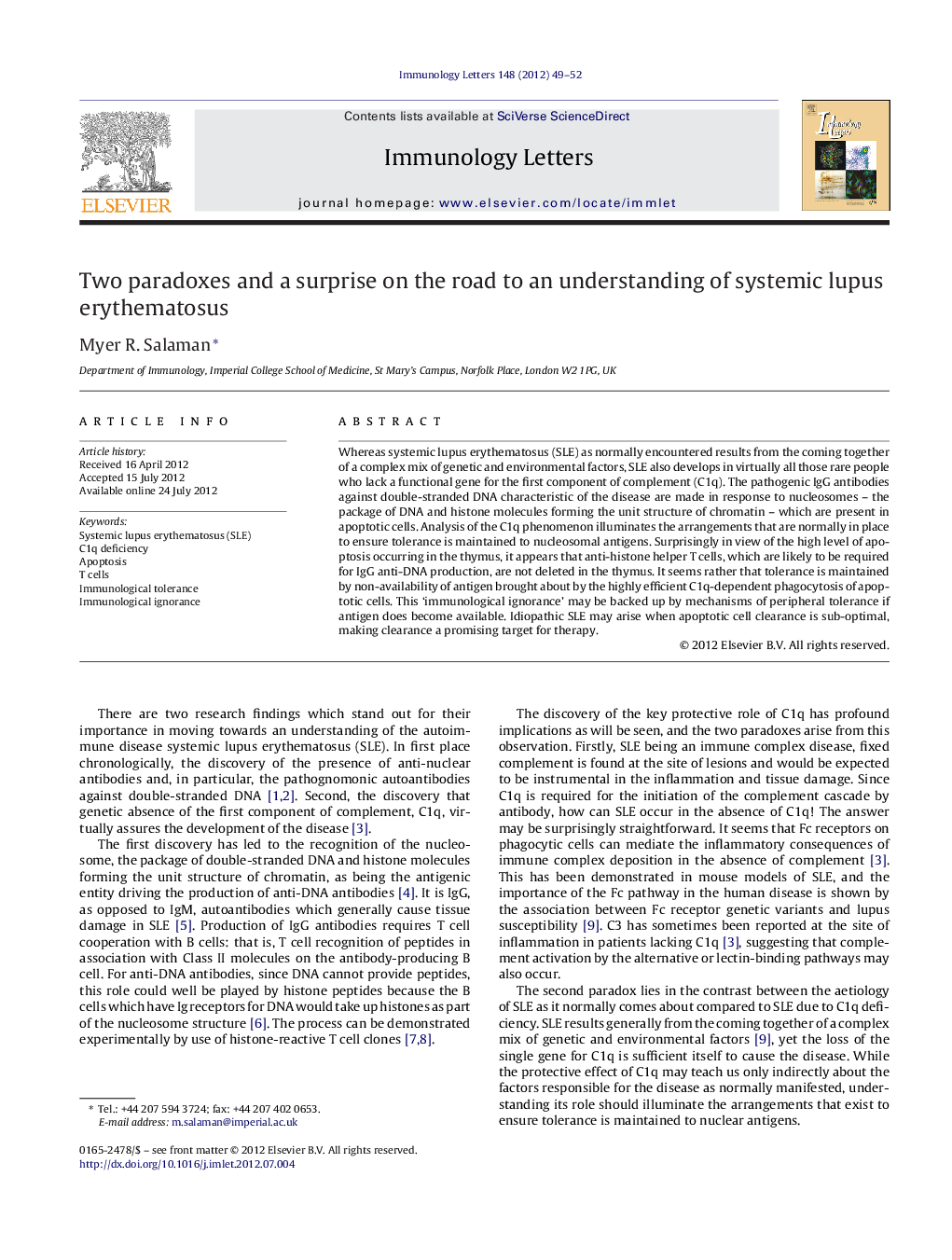| کد مقاله | کد نشریه | سال انتشار | مقاله انگلیسی | نسخه تمام متن |
|---|---|---|---|---|
| 3355616 | 1217194 | 2012 | 4 صفحه PDF | دانلود رایگان |

Whereas systemic lupus erythematosus (SLE) as normally encountered results from the coming together of a complex mix of genetic and environmental factors, SLE also develops in virtually all those rare people who lack a functional gene for the first component of complement (C1q). The pathogenic IgG antibodies against double-stranded DNA characteristic of the disease are made in response to nucleosomes – the package of DNA and histone molecules forming the unit structure of chromatin – which are present in apoptotic cells. Analysis of the C1q phenomenon illuminates the arrangements that are normally in place to ensure tolerance is maintained to nucleosomal antigens. Surprisingly in view of the high level of apoptosis occurring in the thymus, it appears that anti-histone helper T cells, which are likely to be required for IgG anti-DNA production, are not deleted in the thymus. It seems rather that tolerance is maintained by non-availability of antigen brought about by the highly efficient C1q-dependent phagocytosis of apoptotic cells. This ‘immunological ignorance’ may be backed up by mechanisms of peripheral tolerance if antigen does become available. Idiopathic SLE may arise when apoptotic cell clearance is sub-optimal, making clearance a promising target for therapy.
► C1q deficiency results in SLE without affecting central thymic tolerance.
► Histone-reactive T cells necessary for anti-DNA antibody production are not deleted.
► Tolerance to nuclear antigens is maintained by non-availability of antigen.
► Nuclear antigens become available when apoptotic cell clearance is impaired.
Journal: Immunology Letters - Volume 148, Issue 1, November–December 2012, Pages 49–52